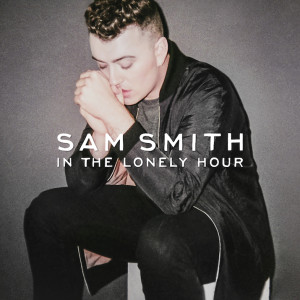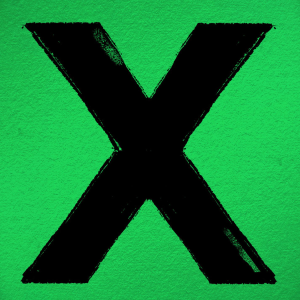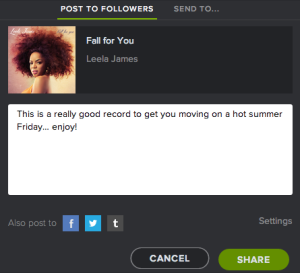 In a recent op-ed for the Wall Street Journal, Taylor Swift expresses optimism regarding the future of music.
In a recent op-ed for the Wall Street Journal, Taylor Swift expresses optimism regarding the future of music.
“…people are still buying albums, but now they’re buying just a few of them. They are buying only the ones that hit them like an arrow through the heart or have made them feel strong or allowed them to feel like they really aren’t alone in feeling so alone.”
She makes a great point here, and I share her overall sentiment. For many of us, music has become disposable. Not indispensable, mind you, but disposable. Whether it’s the task of maintaining a hard drive containing all of your MP3s or managing an account on Spotify or Beats Music, you hardly have time to get engrossed in a new album before 100 more are competing for your attention. Gone are the days where you went to the store, bought a CD, put it into your disc player (car or home) and listened to it over and over (and over) until you got sick of it. And realistically, isn’t it fun to have more variety – and a super-easy interface – at your disposal to help you consume music exactly as you want, rather than being limited by a single-disc player in your car or a 5-disc changer in your home stereo?
Are Streaming Services Like Spotify and Beats Music Bad for Artists?
Unfortunately, much of the rhetoric surrounding the decline in CD (album) sales is that streaming services are to blame. This is unfortunate, because streaming services are for the first time presenting millennials with a compelling reason to consistently spend money on recorded music. From the rise of Napster until the launch of the iTunes store, the record industry wasted a half-decade trying to fight off fans’ desires to consume music in the MP3 format, insisting that the future and past were the same (CDs). Of course, we know that not to be true, and it’s proven to be incredibly difficult for the music business to cram the proverbial toothpaste back into the tube. Think about it: instead of figuring out ways to sell MP3s and profit from them, the music industry dug in its heels fighting against a format that is now their primary for-sale offering.
 And this week, one of the most prominent new releases, Sam Smith’s In The Lonely Hour, is not available on Spotify and other streaming services. This development has caused the album’s sales (on iTunes) to spike dramatically, and has led to suggestions that artists are better served by keeping their music off the streaming services, if not permanently then at least for the first few weeks/months after the music is released.
And this week, one of the most prominent new releases, Sam Smith’s In The Lonely Hour, is not available on Spotify and other streaming services. This development has caused the album’s sales (on iTunes) to spike dramatically, and has led to suggestions that artists are better served by keeping their music off the streaming services, if not permanently then at least for the first few weeks/months after the music is released.
The thing is, streaming services actually offer a very compelling alternative, despite all of the negative commentary we’ve heard from the likes of Thom Yorke (Radiohead) and despite streaming service holdouts by the likes of Sam Smith and Beyoncé. We can start by looking at Sweden, and the effect Daniel Ek’s Spotify has had on music piracy and the viability of the music business in general. Spotify now has 10 million paid subscribers, a number that promises to continue to rise given the incredible value proposition offered: $10/month for access to virtually every piece of recorded music.
But artist royalties on Spotify are terrible, you say. They pale in comparison to what an artist would earn from the sale of a CD in the “good old days,” you say. Well, let’s take a closer look at that.
The Good Old Days Weren’t Always Good, and Tomorrow’s Not As Bad As It Seems
First, let’s go back to the “good old days” and assume you purchased a CD at Tower Records for $12. Of that, the artist would be lucky to see $1, and if there were hefty expenses associated with getting that CD prominently featured on a Tower Records end-cap display, it’s quite conceivable that the artist wouldn’t see a penny. But let’s use the $1 as the example. You buy the 10-track CD. You love it. You listen to it over and over again, a total of 100 times. The artist gets $1. Today, the “superstar royalty rate” for an artist on iTunes is in the 20% range, which means the sale of an album for $10 yields $2 for the artist.
 Now let’s compare that against Spotify. The average royalty paid by Spotify for a “listen” is between $0.006 and $0.0084. For simplicity’s sake, let’s use the lowest number in that range ($0.006). You listen to the same 10-track CD a total of 50 times, because let’s face it, Spotify offers a lot of compelling alternatives. The artist gets $3. And if you listen to the album 100 times (same as the CD example), the artist earns 6x as much as they would’ve from the CD, without needing to damage the environment by printing and shipping plastic discs all over the planet.
Now let’s compare that against Spotify. The average royalty paid by Spotify for a “listen” is between $0.006 and $0.0084. For simplicity’s sake, let’s use the lowest number in that range ($0.006). You listen to the same 10-track CD a total of 50 times, because let’s face it, Spotify offers a lot of compelling alternatives. The artist gets $3. And if you listen to the album 100 times (same as the CD example), the artist earns 6x as much as they would’ve from the CD, without needing to damage the environment by printing and shipping plastic discs all over the planet.
Old: the fan spends $12 so that the artist can receive $1 (if they’re lucky).
New: the fan spends $10/month so that their favorite artists can get paid each and every time they listen to the artist’s music, and if they listen to a 10-track album more than 15-20 times, the artist is virtually guaranteed to earn more than they would have from the sale of a CD. For reference, I’ve listened to Ed Sheeran’s X at least 20-25 times since it was released. For me, while my appreciation and respect for Ms. Swift heightened after taking my daughter to see her at Gillette Stadium last summer, the musical highlight of the night was my discovery of Sheeran, the opening act. He stood before a crowd of 55,000 fans who weren’t there to see him, with nothing but his guitar and a beat box, and proceeded to put on an absolutely scintillating show. I’m not done listening to X, and I’ve listened to plenty of other artists over the past few weeks (Leela James, Foxes, Magic Man, Zac Brown, July Talk, G-Easy, The Gulls, Lana Del Rey, to name just eight), but based upon the low estimate of my listen total, 20 listens to Sheeran’s 16-track deluxe edition of X has yielded him $1.92. And oh, by the way, he also happens to have the top-selling album, ahead of the anti-streaming Sam Smith, so it’s pretty clear that making the album available via streaming services hasn’t exactly harmed his sales.

Old: the CD is shareable only if the fan gives up the disc or makes an illegal copy, neither of which provides the artist with any great benefit. And let’s not even talk about the used CD business, which created a revenue stream designed specifically to cut the artist out of the equation.
New: it’s super-easy for a fan to share the album with 5 (or 500) of their closest friends on social media, thus significantly increasing the likelihood that the artist will get even more listens. How many times did you recommend a CD to someone who chose not to purchase it? How much easier is it to get someone to listen to an album on Spotify? Exactly…
 Instead of Complaining, TAKE ACTION!
Instead of Complaining, TAKE ACTION!
Here’s the reality: the onus is on artists to promote their music to their fans, and there are plenty of things artists should be doing that they haven’t really started doing yet. Here are some strategies that PR-savvy artists should be pursuing:
1) When you release a new record, make sure that Spotify and Beats Music are prominently displayed as listening options. Because while you won’t earn as much in the short term as you would via a sale on iTunes, the long-term benefits can be far more significant (see above, a fan listening to a 10-track album 50x earns 3x as much for the artist as they would’ve by purchasing a $12 CD). If your album hits your fans “like an arrow through the heart,” you’ll earn more than ever before.
2) Create playlists that include your own songs with songs by prominent artists similar in genre/style. Share those playlists with your fans, and ask your fans to share those playlists with their friends. In support of this strategy, tweet out a “Song of the Day” to your followers (URL on Spotify or Beats Music), encouraging them to listen to the song. Add the song to a playlist, and make sure that the playlist contains the new song as well as the others you shared.
3) Use Spotify as a tool to deliver more music to your fans. It was never cost-effective to release rarities CDs and outtake EPs, because the cost of production far exceeded the potential benefit. And even in an iTunes-driven world, getting fans to buy those releases was an uphill battle that made it more work than it was worth. But on Spotify, the distribution cost is minimal, and making the effort to package up live tracks and outtakes into streaming-only “deluxe editions” will increase your listen counts while keeping your fans engaged.
Has your perspective on streaming changed? Hopefully you’ll see the changing environment not as a detriment but as an opportunity. Because if you can do a better job of making your music a part of the soundtrack of your fans’ lives (while they drive, exercise, eat, dance, commute, etc.) you’ll be a lot further along in your quest to make it as a successful recording artist.